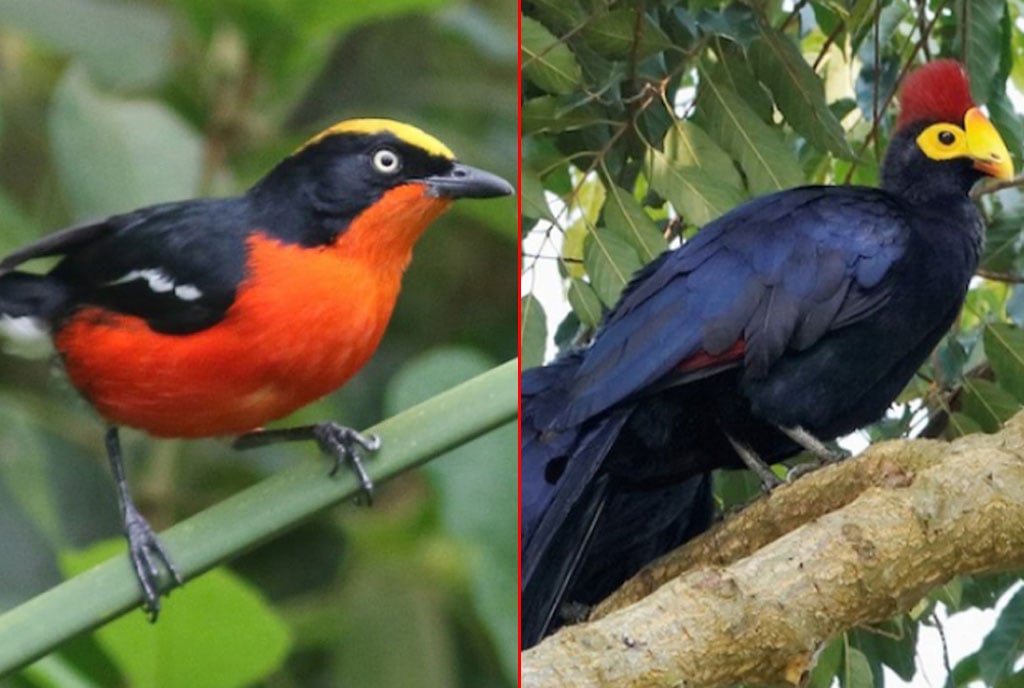Prime
Conservationists identify 165 bird species in Luweero forest

The Papyrus Gonelek (L) and the Ross’s Turaco which are some of the 166 bird species in ‘Lazarus forest’.
PHOTOS/DAN WANDERA
What you need to know:
- Partners want to plant 33,333 trees per year in the natural forest.
When the Church under Kasana-Luweero Diocese through Bethany Land Institute (BLI) embarked on the restoration project for one of the natural forests in Nandere Village, it did not project that it would become home to more than 160 bird species.
The tropical natural forest, covering 244.7 acres of land, almost became extinct as encroachers targeted its indigenous trees for timber and charcoal.
Mr Sylvester Kule, the director of programmes at BLI and the custodians of the Nandere-based natural forest, said conservationists further discovered that 30 percent of the over 160 bird species are migratory.
The habitat has been christened Lazarus Forest, alluding to its resurrection.
“Lazarus forest, which is made up of tall indigenous trees that bear lots of fruits, is attracting more migratory birds from across Uganda. The birds and wild animals are most likely finding a better natural habitat at the Lazarus Forest,” he told Monitor.
Mr Kule said BLI advocates an integrated land management system based on conserving natural resources.
“Several conservation experts have visited and undertaken surveys in the Lazarus forest. While we knew that a forest can attract some birds and wild animals, we did not know that the Lazarus forest is now home to more than 160 bird species,” he said.
Avian Conservation Society of Uganda and Tooro Botanical Gardens, among other partners, undertook the survey which revealed the bird species in the forest.
Mr Erasmus Tumwesigye from the Avian Conservation Society of Uganda said birds can only get attracted to a friendlier and more natural habitat like a forest and wetland.
“It is good news that through the forest conservation plan, Lazarus Natural Forest is now a habitat for more than 160 bird species. We have been patterning with BLI in planting the trees and are now promoting the bird-watching programme,” he said.
Bird species
Mr Derick Kavuma, a conservation officer at BLI, said some of the bird species include Ross’s Turaco, Papyrus Gonelek, Shoebill, Hamerkop, African openbill, Black stork, Abdim’s Stork, African woolly-necked stork, Lesser Jacana, African Jacana, Whimbrel, Black-tailed godwit, Ruddy Turnstone, Purple Heron, Great Egret, Intermediate Egret, Little Egret, Black heron, Western crested Guineafowl and Stone partridge
“Researchers have also discovered that Lazarus Forest has the largest population of the Ross’s Turaco bird species in the central region. We have kept updating the inventory for the bird species. Our recent update reveals that we have about 166 bird species,” he said last Friday.
Luweero District Forest Officer, Mr Deogratius Mujumbi, on Saturday said: “The forest was near extinction. We thank the Church and the partners that have joined hands to rejuvenate the natural forest at Nandere. Lazarus Forest is the only remaining natural forest in the entire district.”
Rejuvenation plan
By 2009, natural forest cover in Nandere had reduced from an estimated 620 acres to about 160 acres as a result of encroachment and suspected land grabbing.
When BLI was established at Nandere Parish by the founding priests, Fr Emmanuel Katongole, Fr Cornelius Ssempala and Fr Anthony Lweza, the target was to help restore the forest.
Fr Katongole in an interview with Monitor in 2022 revealed that restoring nature through deliberate policies including tree planting and good agricultural practices were key priority areas at Nandere Hill.
Partners want to plant 33,333 trees per year in the natural forest.
“We don’t limit the tree planting programme to the Lazarus Forest area, but the immediate community now benefit from the tree planting project. Our tree planting target is 40,000 trees for 8 years,” Mr Kule said.
Kasana-Luweero Diocese, Fairventures Uganda and Uganda Breweries Limited, among others, have contributed to restoring the forest in Nandere.





